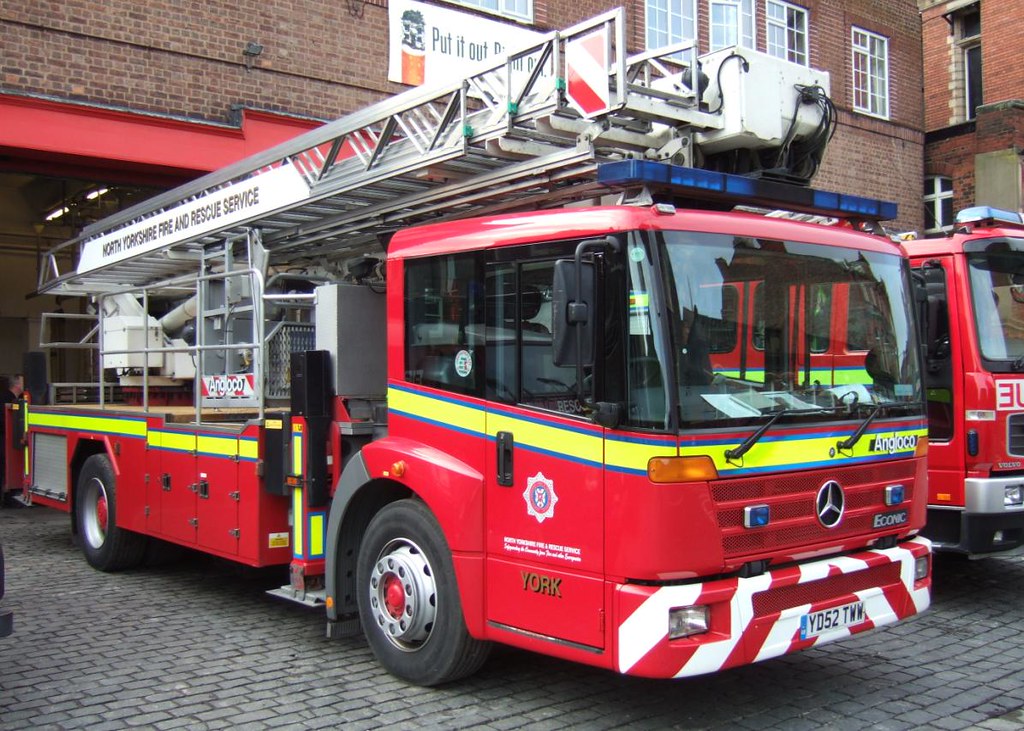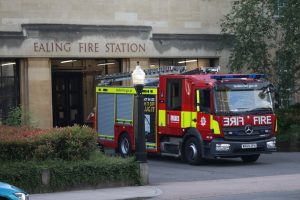Fire Reform White Paper: What Are The Main Changes?

The most comprehensive plans for fire reform in decades have been set out on 18 May in the UK Government’s Fire Reform White Paper. Housing Industry Leaders look at the White Paper and investigates how it will help to strengthen the emergency services and ensure that people feel safe in their homes.
Changes that have been announced include the commencement of the Fire Safety Act 2021, which aims to make sure that all blocks of flats are properly assessed for fire safety risks. The Fire Safety (England) Regulations 2022 will aim to help people feel safer in their homes.
After the Grenfell Tower Tragedy, it is now more essential than ever that there are improvements to fire rescue services’ efficiency, effectiveness, and culture. A focus is needed on funding for fire protection and helping services across England.
Public Safety Is The Focus
At the centre of the White Paper, there are many key plans that the government aims to deliver, and increasing public safety is one of them.
The government hope to achieve public safety by improving the professionalism of the fire and rescue services through modern workforce practices and potentially establishing a College of Fire and Rescue.
Through the proposals to transfer fire governance to a single elected individual and delivery will be overseen by operationally independent Chief Fire Officers, improved accountability is delivered.
Better engagement with the public will be encouraged through a 10-week consultation that will see the government listen to the views of the public and stakeholders, finalising its reform programme.
Home Secretary Priti Patel said: “The government’s priority is keeping the public safe, and the reforms we’ve set out today will strengthen and support our hard-working fire and rescue services.
“The White Paper will be transformative in how firefighters are trained and enable fire and rescue services to build on their strengths and leadership.
The Grenfell tragedy must never happen again, and we are continuing to drive forward progress on putting the Grenfell Tower Inquiry recommendations into law.
Keeping The Public Safe Through Prevention, Protection And Response Work
In September 2021, the Cabinet Office’s Resilience Strategy Call for Evidence closed. The Home Office has consulted with the National Fire Chief’s Council (NFCC) to ensure that the fire sector continues to play an essential role in national and local community resilience.
The White Paper outlines that firefighters need to be prepared and equipped with the right skills and expertise to “respond to a range of incidents, across the complex, built environment and national infrastructure.”
HMICFRS inspections have shown that the operational response is a strength of services but has reported a considerable variation in how prevention and protection work is carried out, understood and prioritised.
The government has said that “we will continue to work with the NFCC to develop and implement prevention and protection programmes.”
Supporting Vulnerable Residents Is Essential
Highlighting the key focus of public safety, also announced is the commencement of the Fire Safety Act and the launch of the Fire Safety (England) Regulations 2022.
Paving the way for meeting many of the remaining Grenfell Tower Inquiry recommendations, these changes aim to deliver fire safety improvements in muti-occupied residential buildings. The government wants to ensure that fire and rescue services have the information that they need to plan their response to a fire in a high-rise building.

Credit: the blowup, Unsplash
As revealed in the UK Government’s ‘Detailed analysis of fires attended by fire and rescue services, England, April 2020 to 2021‘, there were 4,057 primary fires that involved an evacuation, a decrease of 22 per cent compared with the financial year 2019 to 2020 (5,184). However, the decline is thought to be due to the covid-19 pandemic.
Responding to the Personal Emergency Evacuation Plans consultation, the government has launched a new consultation on its alternative package of proposals that hopes to support the fire safety of vulnerable residents whose ability to self-evacuate may be compromised.
Ensuring That Services Have The Necessary Information Is Key
The new consultation will include a new proposal known as “Emergency Evacuation Information Sharing”, which would require designated individuals responsible for fire safety in their building.
Fire and Rescue Services will be provided with up-to-date information on where the residents live within the building, with this information being used to inform their operational strategy and prioritise resources to assist further and affect the evacuation of these residents.
Fire Minister, Lord Greenhalgh, said: “I am delighted to introduce this comprehensive reform plan for our fire and rescue services and improvements to fire safety.
“The Grenfell Inquiry and independent inspections show reform is needed, and we are tackling issues head-on with this White Paper.
Fire professionals step up to protect and serve their communities and it is only right that they have the right tools to do their jobs effectively.
Services Must Be Supported By Research
To ensure that services can effectively serve their communities, they must be supported by the best available evidence and research. The White Paper explains how the government want to explore whether central fire and rescue research personnel, working closely with services, could help to ensure that research that is carried out within the physical and social sciences is “effectively prioritised, co-ordinated, quality-assured, and disseminated.”
A central fire and rescue research capability could benefit services by undertaking many activities. One of these is by providing a permanent set of skilled analysts to collaborate with others, including services, in order to promote research.
Another benefit the capability could provide is by being able to commission other organisations to conduct research on behalf of the central fire and rescue research function when national-level research is appropriate.
Directly undertaking research, including reviews of existing evidence and the identifying of emergent issues, opportunities, and ongoing fire-related research that is undertaken will also benefit services. It will ensure that priorities are being addressed and that learning is being shared to avoid duplication.
Strengthening Our Fire And Rescue Services
As recommended by Her Majesty’s Inspectorate of Constabulary and Fire & Rescue Services (HMICFRS), the role of fire and rescue services needs clarification with greater local flexibility for firefighters and staff.
Responding to local needs in line with national expectations and guidance is the aim. It is outlined in the White Paper that services are hoped to be helped make the best use of the resources available to them, with the ability to come together quickly and respond safely to local and national emergencies.
It is explained that chief fire offices will be skilled leaders and managers: “with clear responsibility to run and manage their services effectively and efficiently, in order to meet their local risk.”
Using data and evidence to inform decision-making will be essential and will support services to embrace learning and share best practices and innovation.
When it comes to the staff, it is vital that fire and rescue services “create an environment where they get the best out of people.” The reform agenda seeks to drive improvement in three essential areas: well-trained and supported people, high levels of professionalism, and strong and effective governance.
In addition to this, the White Paper investigates how fire and rescue professionals can continue to be supported to better protect their communities, with an ambition for an independent College of Fire and Rescue focused on the following areas: Research, data, leadership, ethics and clear expectations for fire and rescue services.

Credit: Kai Butcher, Unsplash
Each Service Must Have A Robust Business Continuity Plan
Business continuity is set out in the fire and rescue service National Framework for England. The Home Office will work closely with the NFCC to ensure that each service has a robust business continuity plan that considers a range of challenges, including the impact of industrial action. The plans will be independently assured with the NFCC, the National Resilience Assurance Team, and HMICFRS.
Alongside the wider National Resilience Strategy, the Civil Contingencies Act 2004 is under review and includes the duties of fire and rescue services in relation to civil emergencies and in collaboration with key local partners.
College of Fire and Rescue
As stated in the White Paper, there could be an opportunity for an independent body to build on the foundations laid and continue to drive forward the further professionalisation of services.
A benefit of creating an independent professional body could be to provide an organisation independent of fire and rescue services but at arm’s length from the government. Providing a dedicated resource to support services rather than those who also must undertake operational roles, it could be led by staff working in the organisation as their primary role.
It would be vital for any new organisation to work with services, employers, the NFCC, the unions, HMICFRS and others, to ensure that work is fully informed by the views of the sector.
College of Fire and Rescue (CoFR) is an ambition of the UK government and would be the independent body to support the UK’s fire and rescue professionals to best protect their communities.
By providing a permanent body and sharing the outputs of its various proposed strands of work, CoFR could provide vital aid to services in implementing the reforms outlined in the White Paper.
With these changes implemented, the White Paper potentially will help to strengthen the emergency services and ensure that people feel safer in their homes.

